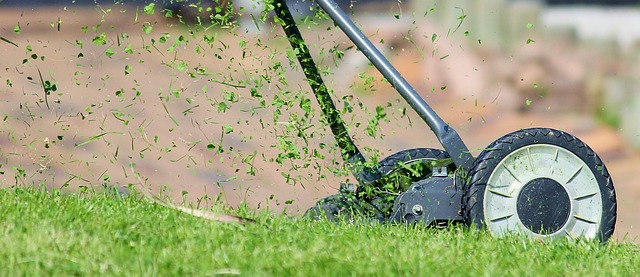Learn more about lawn mowing
Maintaining a beautiful lawn requires more than just cutting grass when it gets too long. Proper lawn mowing involves understanding timing, technique, and equipment selection to promote healthy growth while preventing damage. From choosing the right mower height to establishing a consistent schedule, effective lawn care practices can transform your outdoor space into a thriving green landscape that enhances your property's appearance and value.

Learn more about lawn mowing
A well-maintained lawn serves as the foundation of attractive landscaping, but achieving that perfect green carpet requires understanding the science and art of proper mowing. Many homeowners approach lawn care with good intentions but lack the knowledge to maximize their efforts. Successful lawn maintenance goes beyond simply cutting grass shorter – it involves strategic timing, proper equipment use, and techniques that promote healthy root development and disease resistance.
Discover Effective Mowing Techniques
The key to effective mowing lies in following the one-third rule: never remove more than one-third of the grass blade length in a single cutting session. This practice prevents shock to the grass plants and maintains their ability to photosynthesize effectively. Sharp mower blades are essential for clean cuts that heal quickly, while dull blades tear grass, creating brown tips and entry points for diseases.
Mowing patterns should vary with each session to prevent soil compaction and encourage upright growth. Alternating between diagonal, horizontal, and vertical patterns helps grass develop stronger root systems. The optimal mowing height depends on grass type – cool-season grasses like fescue and bluegrass thrive at 2.5 to 3.5 inches, while warm-season varieties such as Bermuda and Zoysia prefer heights between 1 to 2.5 inches.
Understand the Benefits of Regular Lawn Care
Consistent lawn maintenance provides numerous advantages beyond aesthetic appeal. Regular mowing encourages lateral growth, creating denser turf that naturally crowds out weeds and reduces the need for chemical treatments. Properly maintained lawns also improve soil structure through root development and organic matter decomposition from grass clippings.
Frequent mowing during growing seasons helps identify potential problems early, such as pest infestations, disease symptoms, or irrigation issues. This proactive approach allows for timely interventions that prevent minor issues from becoming major lawn renovation projects. Additionally, well-maintained grass provides environmental benefits including oxygen production, carbon sequestration, and natural cooling effects around homes.
Explore Tips for a Healthier Lawn
Timing plays a crucial role in lawn health, with morning mowing being ideal when grass is dry but temperatures remain moderate. Avoid cutting wet grass, which can lead to uneven cuts and promote fungal diseases. During hot summer months, raise mowing heights slightly to provide additional shade for root systems and improve drought tolerance.
Leaving grass clippings on the lawn, known as grasscycling, returns valuable nutrients to the soil and reduces waste. These clippings decompose quickly when grass is cut regularly, providing up to 25% of the lawn’s nitrogen needs. However, remove clippings if they form thick mats that could smother underlying grass.
Seasonal adjustments are essential for optimal results. Spring mowing should begin when grass actively starts growing, while fall represents the final opportunity to prepare lawns for winter dormancy. Gradually lower cutting heights in fall to reduce snow mold risks in northern climates.
Find the Right Equipment for Your Needs
Selecting appropriate mowing equipment depends on lawn size, terrain, and personal preferences. Walk-behind mowers work well for smaller properties under half an acre, offering precise control and maneuverability around obstacles. Riding mowers become practical for larger areas, reducing physical strain and cutting time significantly.
Reel mowers provide the cleanest cuts and work excellently for small, level lawns with fine-textured grasses. These manual or powered units create precise cuts that promote healthy growth but require more frequent use to maintain effectiveness. Rotary mowers, the most common type, handle various grass types and terrain conditions effectively.
Mulching mowers feature specially designed decks and blades that cut clippings multiple times before distributing them evenly across the lawn. This equipment eliminates the need for bagging or raking while providing natural fertilization. Consider factors like engine power, cutting width, and comfort features when selecting equipment for long-term satisfaction.
| Equipment Type | Price Range | Best For | Key Features |
|---|---|---|---|
| Push Reel Mower | $100-$400 | Small lawns under 0.25 acres | Quiet, eco-friendly, precise cutting |
| Walk-Behind Rotary | $200-$800 | Medium lawns 0.25-0.5 acres | Versatile, self-propelled options |
| Riding Mower | $1,500-$5,000 | Large lawns over 1 acre | Comfort, speed, attachments available |
| Zero-Turn Mower | $3,000-$10,000 | Commercial or large residential | Maximum efficiency, professional results |
Prices, rates, or cost estimates mentioned in this article are based on the latest available information but may change over time. Independent research is advised before making financial decisions.
Get Expert Advice on Lawn Maintenance
Professional lawn care services offer valuable expertise for homeowners seeking optimal results without the time investment. These specialists understand local grass types, climate conditions, and seasonal requirements that affect mowing schedules and techniques. Many provide comprehensive programs including fertilization, pest control, and specialized treatments alongside regular maintenance.
Local extension offices and master gardener programs offer free or low-cost educational resources about regional lawn care best practices. These organizations provide soil testing services, plant identification assistance, and troubleshooting guidance for common lawn problems. Online resources and mobile apps can help track mowing schedules, identify grass types, and provide weather-based recommendations.
Consulting with local garden centers and equipment dealers provides hands-on expertise about specific products and techniques suited to your area. These professionals often offer equipment demonstrations, maintenance services, and seasonal advice based on years of experience with local conditions.
Successful lawn mowing combines proper technique, appropriate equipment, and consistent scheduling to create healthy, attractive outdoor spaces. Understanding these fundamental principles enables homeowners to make informed decisions about their lawn care approach, whether handling maintenance personally or working with professional services. Regular attention to mowing practices pays dividends in lawn health, property value, and personal satisfaction with outdoor living spaces.


